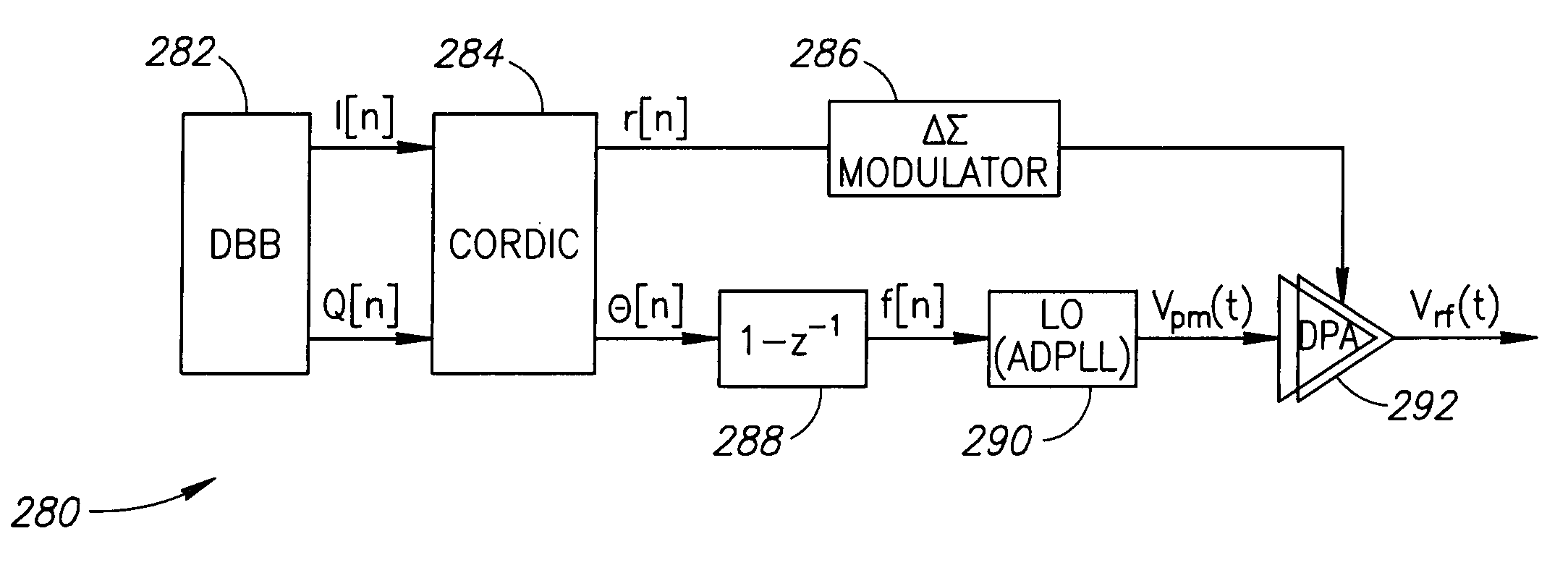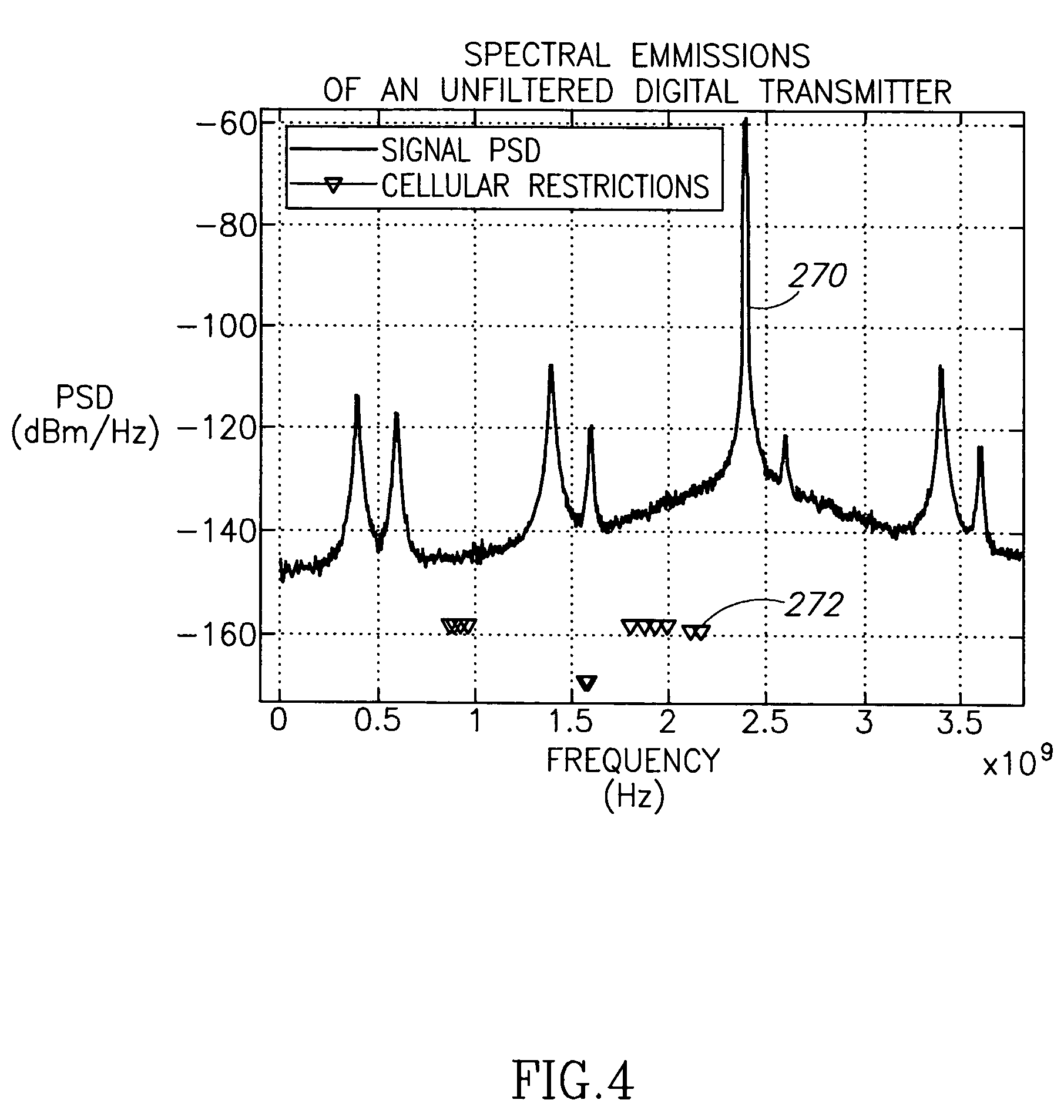Transmitter for wireless applications incorporation spectral emission shaping sigma delta modulator
a technology of spectral emission shaping and transmitter, applied in the field of data communication, can solve the problems of transmitters that fail to meet the specifications of cellular or other communication standards, transmitters that employ many hundreds of transistors, and transmitters that are typically limited in their performance, and achieve the desired noise shaping effect and sufficient attenuation
- Summary
- Abstract
- Description
- Claims
- Application Information
AI Technical Summary
Benefits of technology
Problems solved by technology
Method used
Image
Examples
first example embodiment
2.2 FIRST EXAMPLE EMBODIMENT
[0137]FIG. 5 shows a high level block diagram of a first example embodiment of the present invention. The polar transmitter, generally referenced 280, comprises a digital baseband 282 which generates I and Q data and a CORDIC 284 which converts the I / Q data to amplitude and phase information. In the amplitude path, the amplitude information (ACW) is fed to a ΔΣ modulator 286. In the phase path, the phase information is fed to a differentiator 288, which generates the instantaneous frequency and an ADPLL 290. The output of the ΔΣ modulator and the ADPLL are input to the digital power amplifier 292. The ACW undergoes ΔΣ modulation via the ΔΣ modulator 286. Although the overall ACW rate may be increased, the modulator shapes the noise in such a way that the noise is significantly attenuated for the restricted bands.
second example embodiment
2.3 SECOND EXAMPLE EMBODIMENT
[0138]A second example embodiment, uses the DPA in a Cartesian or Cartesian / polar hybrid mode. The IQ samples directly modulate two orthogonal branches within the DPA, generating the composite RF signal. In this implementation, similar to the first example embodiment described in Section 2.2 above, the DPA quantization noise is virtually unfiltered and may fall directly onto restricted bands. The addition of a ΔΣ modulator to each branch and using the synthesis method described in Section 1 reduces the quantization noise in said bands dramatically.
[0139]A high level block diagram illustrating this architecture is shown in FIG. 6. The transmitter, generally referenced 300, comprises a digital baseband 302, in phase ΔΣ modulator 304, quadrature ΔΣ modulator 306 and hybrid DPA 308. The IQ samples are dithered individually by identical ΔΣ modulators and their outputs drive a hybrid DPA.
2.4 Formulation
[0140]Since the goal is to prevent interference to neighbo...
PUM
 Login to View More
Login to View More Abstract
Description
Claims
Application Information
 Login to View More
Login to View More - R&D
- Intellectual Property
- Life Sciences
- Materials
- Tech Scout
- Unparalleled Data Quality
- Higher Quality Content
- 60% Fewer Hallucinations
Browse by: Latest US Patents, China's latest patents, Technical Efficacy Thesaurus, Application Domain, Technology Topic, Popular Technical Reports.
© 2025 PatSnap. All rights reserved.Legal|Privacy policy|Modern Slavery Act Transparency Statement|Sitemap|About US| Contact US: help@patsnap.com



